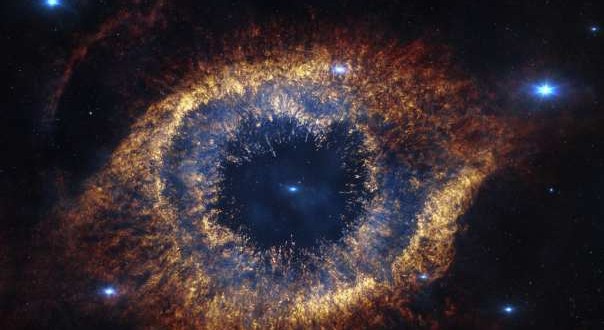An international collaboration of more than 70 scientists involved in a project called POLARBEAR say they have detected the universe’s oldest light along with evidence of the first cosmic inflation, which took place in the initial fraction of a second following the Big Bang.
“It’s a really important milestone,” said Kam Arnold from the University of California, in San Diego. “We’re in a new regime of more powerful, precision cosmology.”
POLARBEAR measures remnant radiation from the Big Bang, which has cooled and stretched with the expansion of the universe to microwave lengths. This cosmic microwave background (CMB) acts as an enormous backlight, illuminating the large-scale structure of the universe and carrying an imprint of cosmic history.
Arnold and many others have developed sensitive instruments called bolometers to measure this light. Arrayed in the telescope, the bolometers record the direction of the light’s electrical field from multiple points in the sky.
“It’s a map of all these little directions that the light’s electric field is pointing,” Arnold said.
POLARBEAR has now mapped these angles with resolution on a scale of about 3 arcminutes, just one-tenth the diameter of the Full Moon.
The team found telling twists called B-modes in the patterns of polarization, signs that this cosmic backlight has been warped by intervening structures in the universe, including such mysteries as dark matter, composed of substance that remains unknown, and the famously aloof particles called neutrinos, which elude capture making them difficult to study.
This initial report, the result of the first season of observation, maps B-modes in three small patches of sky.
Dust in our galaxy also emits polarized radiation like the CMB and has influenced other measurements. But these patches are relatively clean, Arnold said. And variations in the CMB polarization due to dust occur on so broad a scale that they do not significantly influence the finer resolution B-modes in this report.
“We are confident that these B-modes are cosmological rather than galactic in origin,” Arnold said.
Observations continue, and the data stream will ultimately be fed by additional telescopes comprising the Simons Array. Together they will map wider swaths of the sky, making fundamental discoveries possible.
“POLARBEAR is a real tour de force. With a relatively small, but strong, UC-led team, we have surpassed the next-nearest competitors by an order of magnitude in sensitivity. We have paved the way towards solving the deepest mysteries in the quest to understand matter and energy at the beginning of time,” said Brian Keating, also of UC San Diego.
Agencies/Canadajournal
 Canada Journal – News of the World Articles and videos to bring you the biggest Canadian news stories from across the country every day
Canada Journal – News of the World Articles and videos to bring you the biggest Canadian news stories from across the country every day



